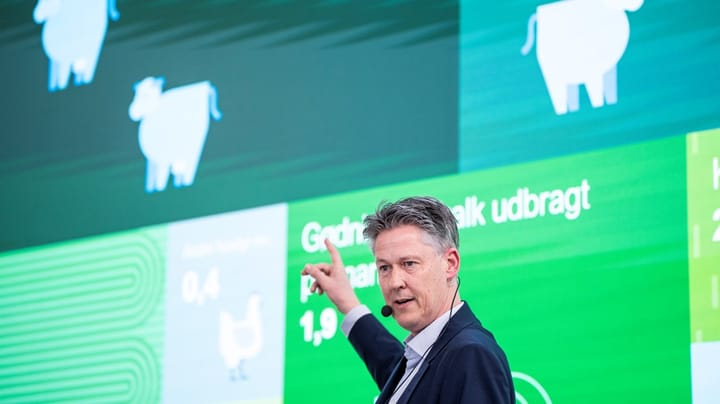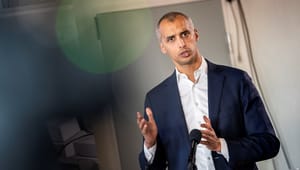Danmark og Brasilien er slet ikke så forskellige
DEBAT: Danmark og Brasilien oplever for tiden nogle af de samme udfordringer på sundheds- og velfærdsområdet. Derfor kan dansk ekspertise inden for velfærdsteknologi blive en inspirationskilde for den brasilianske sundhedsektor, hvor et samlet fokus på både sundhed og velfærd endnu ikke er særlig udbredt. Det skriver Gustavo Ferraz de Luna, direktør i Luna Consulting og ekstern konsulent for Welfare Tech.

Af Gustava Ferraz de Luna
Adm. direktør Luna Consulting
Brazil is the fifth largest country in the world by land area (approximately 8.511.965 km2) with a population consisting of almost 200 million habitants. In comparison, Denmark has a territory size of approximately 43.094 km2 with a population of approximately 5.5 million habitants.
These demographic and territorial contrasts are evident. However, when it comes to Healthcare, Brazil and Denmark are currently facing at least two similar challenges, namely an increase of the elderly population and an increase of persons suffering from chronic diseases.
In Brazil, the elderly population (+65 years) according to IBGE (Instituto Brasileiro de Geografia e Estatística) will increase from the current level (2013) of 14.9 million (7,4 percent of the total population) to 58.4 million (26,7 percent of the total population) in 2060. Furthermore, a higher percentage of the Brazilian population is suffering from chronic diseases.
According to the Brazilian Ministry of Health, 51 percent of the Brazilian population is currently overweight in comparison to 43 percent in 2006. The number of the population with chronic diseases such as diabetes, cancer and hypertension will increase more in 2033 than to parasitic infectious diseases, such as diarrhea. Research shows that the rate of deaths per 100.000 inhabitants by ischemia, such as myocardial infarction, is expected to grow by 52 percent before 2033. The same should occur with diabetes, with increased rates of death in 58.2 percent as Brazil already ranks fifth place in number of diabetes cases of 7.6 million habitants.
Brazil represents a market of opportunities for Danish companies developing innovative products and services. Specifically for companies addressing the topic of welfare technologies.
In August 2011, the Brazilian government launched a national plan to reduce the rate of premature mortality (under 70 years) for these diseases by two percent per year, however; it is rather difficult to quantify its efficacy.
The Brazilian health care system
In sum, the Brazilian health care is organized in primary, secondary and tertiary care both in the public and in private sector. The Brazilian federal constitution of 1988, entitle free and universal access to health to the entire population. According to the Ministry of Health in Brazil, the unified public health care (SUS) system currently benefits 190 million people and accounts:
· 6.100 registered hospitals
· 45.000 primary care units
· 30.300 Family Health Teams (FHT)
· Performing 2.8 billion of annual outpatient procedures, 19.000 transplants, 236.000 heart surgeries and 9.7 million procedures chemotherapy and radiotherapy and 11 million hospitalizations.
The percentage of the population possessing a private healthcare plan is approximately 47.9 million habitants according to IESS (Instituto de Estudos de Saude Suplementar). These patients can choose to visit the local clinic, or the general practitioner doctor, or a specialist doctor, or the emergency department of a private hospital.
How to understand the Brazilian system
In order to understand the complexity of the Brazilian health care system and to promote collaboration of Danish and Brazilian researchers, the Danish government together with a delegation of Danish researchers has visited leading Brazilian health institutions in the beginning of this month.
Additionally, Welfare Tech, a Danish non-profitable association based in Odense operating as a national cluster in Denmark and a hub for innovation and business development in healthcare, homecare and social services, joined this delegation. The main goal of the Welfare Tech network of partners is to promote new business opportunities and create innovation to meet the challenges of an ageing society with greater efficiency and quality of life.
In this visit, the focus has been the leading states of the Southeast region of Brazil, which accounts for 84.4 percent of the Brazilian population and presents the highest social indicators. The metropolis of São Paulo (11.8 million) and Rio de Janeiro (6.5 million), and there the largest number of healthcare facilities are concentrated both in terms of number of hospitals and hospital beds.
For example, the leading public hospital in Latin America, "Das Clinicas" University Hospital is located São Paulo city. A considerable number of leading private hospitals are also located in the city of São Paulo.
The Danish contribution to the Brazilian healthcare
The southeast region of Brazil represents a market of opportunities for Danish companies developing innovative products and services.
Specifically for companies addressing the topic of welfare technologies. This holistic view of health AND care in terms of offerings to the population is not yet widespread in the country. However, stakeholders in both the private and the public sector are aware that in order to address the aforementioned challenges it is required to innovate in terms of both process and development of new products and services.
Denmark's experience in addressing healthcare AND care in a holistic manner involving the primary, secondary, tertiary and home care sectors is heavily based on the use of innovative technologies, education and training of which can be a source of inspiration to the Brazilian healthcare community.
The aforementioned event organized in early September in Brazil by the Innovation Centre and Embassy of Denmark in Brazil is a true example of how the Brazilian Healthcare community can be involved in understanding what Denmark can offer in terms of welfare technologies. A clear outcome of this event are twofold:
· The leading private hospital in Brazil and Latin America, namely Hospital Israelita Albert Einstein (HIAE) will be visiting Denmark in order to understand what Denmark can offer in terms of telemedicine and critical care solutions and
· Welfare Tech is closely discussing a partnership with the leading Medical University of Ribeirão Preto of São Paulo State – USP and Technological Park FIPASE/Supera in order to discuss potential areas of collaboration in a model of sustainable partnership.
This could include scientific collaboration between Welfare Tech members, Danish companies, hospitals and research institutions both in Brazil and in Denmark. For Danish companies, the interest would be to use the university to help develop (localize), test and provide clinical documentation for the Brazilian market with a view to entering this market.








